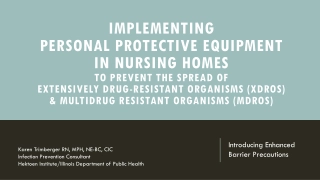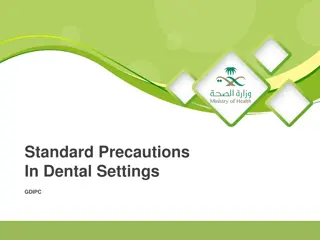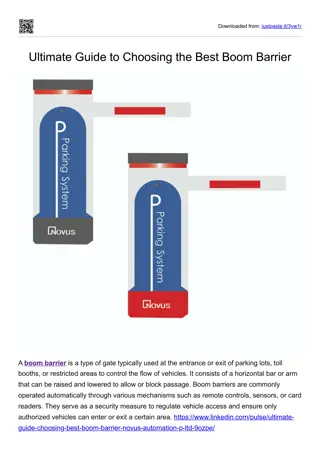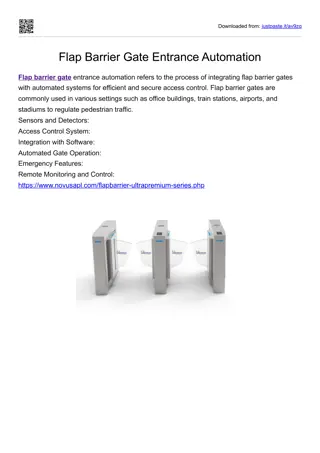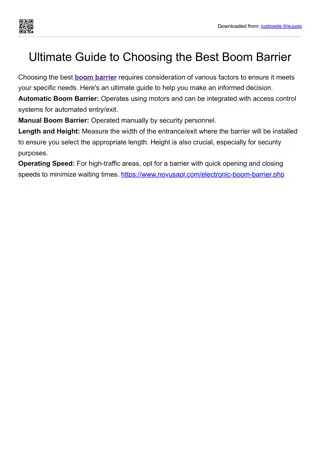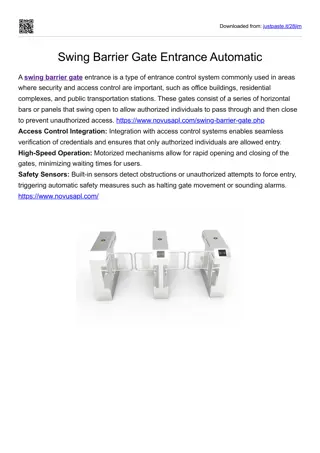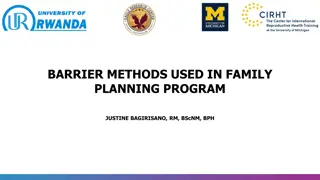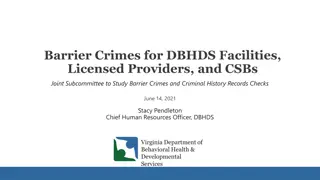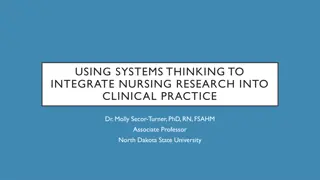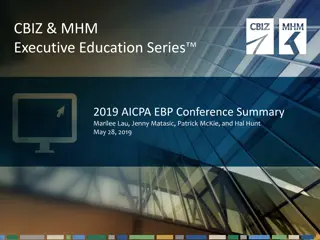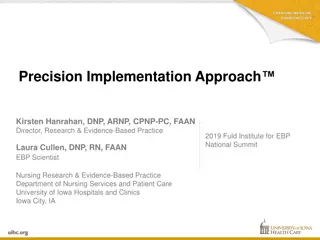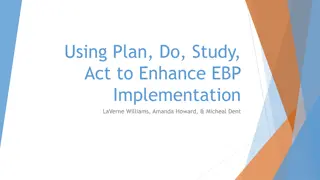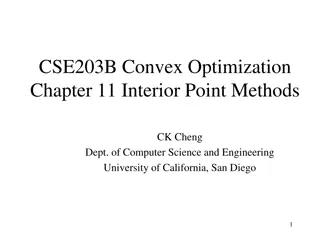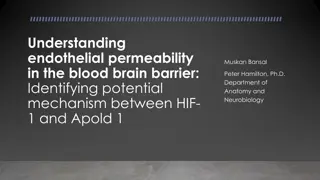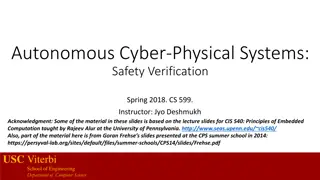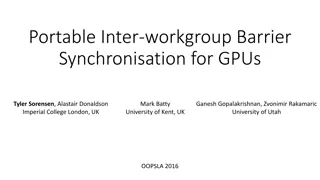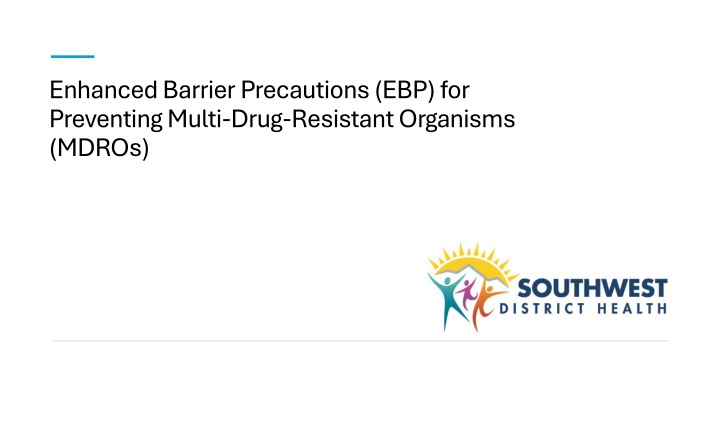
Preventing Multi-Drug-Resistant Organisms with Enhanced Barrier Precautions
Learn how Enhanced Barrier Precautions (EBP) can help prevent Multi-Drug-Resistant Organisms (MDROs) in healthcare settings. EBP involves targeted gown and glove use during high-contact care activities and is crucial for reducing transmission of MDROs. This article provides insights into the implementation and importance of EBP, as well as the types of MDROs targeted by the CDC.
Download Presentation

Please find below an Image/Link to download the presentation.
The content on the website is provided AS IS for your information and personal use only. It may not be sold, licensed, or shared on other websites without obtaining consent from the author. If you encounter any issues during the download, it is possible that the publisher has removed the file from their server.
You are allowed to download the files provided on this website for personal or commercial use, subject to the condition that they are used lawfully. All files are the property of their respective owners.
The content on the website is provided AS IS for your information and personal use only. It may not be sold, licensed, or shared on other websites without obtaining consent from the author.
E N D
Presentation Transcript
Enhanced Barrier Precautions (EBP) for Preventing Multi-Drug-Resistant Organisms (MDROs)
EBP may be indicated (when Contact Precautions do not otherwise apply) for residents with any of the following: Wounds or indwelling medical devices, regardless of MDRO colonization status Infection or colonization with an MDRO. Enhanced Barrier Precautions (EBP) are an infection control intervention designed to reduce transmission of resistant organisms that employs targeted gown and glove use during high contact resident care activities. Multidrug-resistant organism (MDRO) transmission is common in skilled nursing facilities, contributing to substantial resident morbidity and mortality and increased healthcare costs. Examples of MDROs Targeted by CDC include: Pan-resistant organisms Carbapenemase-producing carbapenem- resistant Enterobacterales Carbapenemase-producing carbapenem- resistant Pseudomonas spp. Carbapenemase-producing carbapenem- resistant Acinetobacter baumannii Candida auris Standard Precautions, which are a group of infection prevention practices, continue to apply to the care of all residents, regardless of suspected or confirmed infection or colonization status. Effective implementation of EBP requires staff training on the proper use of personal protective equipment (PPE) and the availability of PPE and hand hygiene supplies at the point of care. Additional epidemiologically important MDROs may include, but are not limited to: Methicillin-resistant Staphylococcus aureus (MRSA) ESBL-producing Enterobacterales Vancomycin-resistant Enterococci (VRE) Multidrug-resistant Pseudomonas aeruginosa Drug-resistantStreptococcus pneumoniae
Summary of PPE Use and Room Restriction When Caring for Residents Colonized or Infected with MDROs in Nursing Homes Summary of PPE Use and Room Restriction When Caring for Residents Colonized or Infected with MDROs in Nursing Homes Precautions Precautions Applies to: Applies to: PPE used for these situations: PPE used for these situations: Any potential exposure to: Required PPE Required PPE Room restriction Room restriction Blood Depending on anticipated exposure: Body fluids gloves, gown, or facemask or eye protection Standard Precautions Standard Precautions All residents None Mucous membranes (Change PPE before caring for another resident) Non-intact skin Potentially contaminated environmental surfaces or equipment During high-contact resident care activities: Dressing Gloves and gown prior to the high- contact care activity Bathing/showering All residents withany of the following: Transferring Infection or colonization with an MDROwhen Contact Precautions do not apply Enhanced Barrier Enhanced Barrier Precautions Precautions Providing hygiene (Change PPE before caring for another resident) None Wounds and/or indwelling medical devices (e.g., central line, urinary catheter, feeding tube, tracheostomy/ventilator)regardless of MDRO colonization status Changing linens (Face protection may also be needed if performing activity with risk of splash or spray) Changing briefs or assisting with toileting Device care or use: central line, urinary catheter, feeding tube, tracheostomy/ventilator Wound care: any skin opening requiring a dressing All residents infected or colonized with a MDROin any of the following situations: Presence of acute diarrhea, draining wounds or other sites of secretions or excretions that are unable to be covered or contained Gloves and gown For a limited time period, as determined in consultation with public health authorities, on units or in facilities during the investigation of a suspected or confirmed MDRO outbreak (Don before room entry, doff before room exit; change before caring for another resident) Yes, except for medically necessary care Contact Precautions Contact Precautions Any room entry (Face protection may also be needed if performing activity with risk of splash or spray) When otherwise directed by public health authorities All residents who have another infection (e.g., C. difficile, norovirus, scabies) or condition for which Contact Precautions is recommended in Appendix A (Type and Duration of Precautions Recommended for Selected Infections and Conditions) of the CDC Guideline for Isolation Precautions
Implementing Contact versus Enhanced Barrier Precautions This table only applies to MDROs, not all pathogens that may require use of transmission-based precautions.
Outside the residents room, EBP should be followed when performing transfers or assisting during bathing in a shared/common shower room and when working with residents in the therapy gym, specifically when anticipating close physical contact while assisting with transfers and mobility. In general, gowns and gloves would not be recommended when performing transfers in common areas such as dining or activity rooms, where contact is anticipated to be shorter in duration. Residents are not restricted to their rooms or limited from participation in group activities. Because EBP do not impose the same activity and room placement restrictions as Contact Precautions, they are intended to be in place for the duration of a resident s stay in the facility or until resolution of the wound or discontinuation of the indwelling medical device that placed them at higher risk. Facilities have discretion on how to communicate to staff which residents require the use of EBP.
When implementingContact Precautions Precautions Precautions, it is critical to ensure that staff have awareness of the facility's expectations about hand hygiene and gown/glove use, initial and refresher training, and access to appropriate supplies. To accomplish this: Post clear signageon the door or wall outside of the resident room indicating the type of Precautions and required PPE (e.g., gown and gloves) For Enhanced Barrier Precautions, signage should also clearly indicate the high-contact resident care activities that require the use of gown and gloves Make PPE, including gowns and gloves, available immediately outside of the resident room Ensure access to alcohol-based hand rub in every resident room (ideally both inside and outside of the room) Position a trash can inside the resident room and near the exit for discarding PPE after removal, prior to exit of the room or before providing care for another resident in the same room Incorporate periodic monitoring and assessment of adherence to determine the need for additional training and education Provide education to residents and visitors Additional resources: https://www.cdc.gov/long-term-care- facilities/hcp/prevent- mdro/PPE.html#:~:text=Enhanced%20Barrier%20Precautions%20(EB P)%20are,high%20contact%20resident%20care%20activities. Contact Precautions or Enhanced Barrier Enhanced Barrier Implementation


